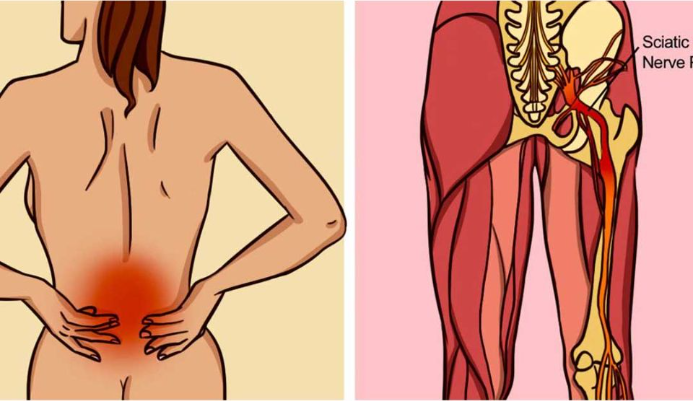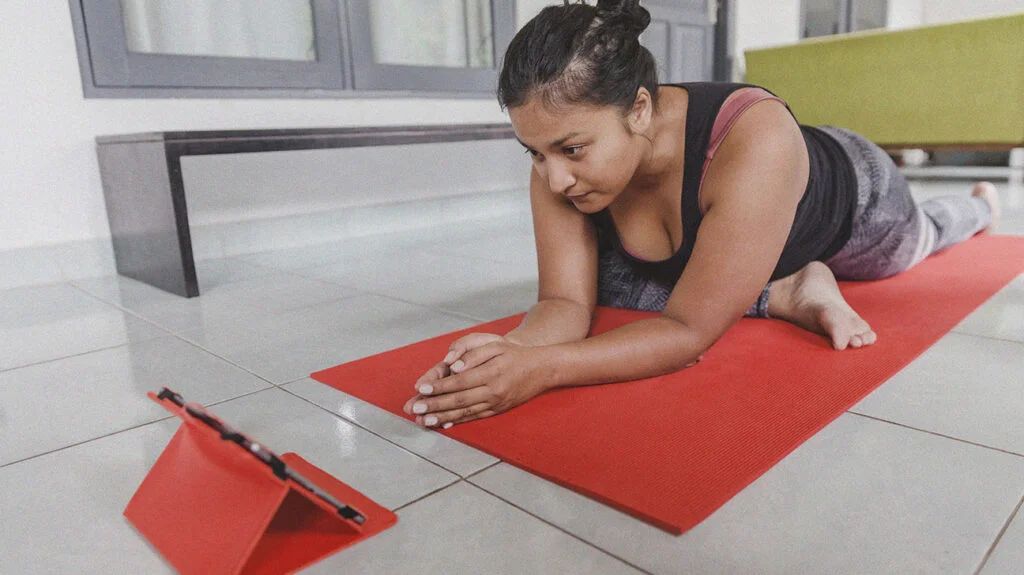Sciatica is a common condition characterized by pain radiating along the path of the sciatic nerve, which extends from your lower back through your hips, buttocks, and down each leg. Typically, sciatica affects only one side of the body, and it can range from mild discomfort to severe, debilitating pain. It is often caused by a herniated disc, bone spur, or narrowing of the spine that compresses the sciatic nerve. Understanding the causes and treatment options is crucial for effectively managing this condition.

Common Causes of Sciatica
Several factors can contribute to the development of sciatica, but the most common cause is a herniated disc. This occurs when the soft material inside the disc pushes through its outer layer, compressing the sciatic nerve. Other causes include:
- Spinal stenosis: A narrowing of the spinal canal that puts pressure on the nerve.
- Degenerative disc disease: The breakdown of spinal discs over time.
- Spondylolisthesis: When one vertebra slips forward over another.
- Piriformis syndrome: Compression of the sciatic nerve by the piriformis muscle in the buttock.
Identifying the specific cause is essential for effective, targeted treatment.
Recognizing the Symptoms
The symptoms of sciatica can vary widely, from a dull ache to sharp, shooting pain that makes it difficult to move. Common symptoms include:
- Lower back pain that radiates into the buttock and down the leg.
- Burning or tingling sensations down the affected leg.
- Weakness or numbness in the leg or foot.
- Pain that worsens when sitting, sneezing, or coughing.
Recognizing these symptoms early can help you seek treatment promptly and avoid complications.
Diagnosis and Medical Evaluation
A proper diagnosis of sciatica starts with a comprehensive medical history and a physical examination. Your doctor will assess muscle strength, reflexes, and your ability to perform certain movements like walking on your heels and toes. To further evaluate the condition, imaging tests such as X-rays, MRIs, or CT scans may be ordered to determine the source of the nerve compression. In some cases, an electromyography (EMG) test may be conducted to assess the electrical activity in your muscles and nerves.
Effective Treatment Options

Treating sciatica focuses on relieving pain and restoring mobility. Common treatment options include:
- Physical therapy: Targeted exercises to strengthen the muscles around the lower back and improve flexibility.
- Medications: Anti-inflammatories, muscle relaxants, and pain relievers can reduce discomfort.
- Corticosteroid injections: Injections around the irritated nerve can help reduce inflammation.
- Surgery: In severe cases, procedures like microdiscectomy or laminectomy may be necessary if conservative treatments fail to provide relief.
The right treatment approach depends on the severity of the condition and the underlying cause of sciatica.
Pain Management Techniques
Managing sciatica pain often involves a combination of self-care techniques and medical treatments. Here are some strategies to consider:
- Heat and cold therapy: Apply cold packs to reduce inflammation during the first few days of a flare-up, then switch to heat packs to soothe tight muscles.
- Gentle stretching: Engage in stretching exercises that target the lower back and legs to alleviate pressure on the sciatic nerve.
- Over-the-counter pain relief: Medications like ibuprofen or acetaminophen can help manage mild pain.
- Epidural steroid injections: For more severe pain, your doctor may recommend an injection to reduce inflammation around the nerve.
Consult with your healthcare provider to develop a personalized pain management plan.

Home Remedies for Relief
For those experiencing mild sciatica, home remedies can offer significant relief:
- Cold and heat therapy: Alternate between cold and heat packs to reduce swelling and relax muscles.
- Stretching exercises: Focus on stretches that relieve pressure on the sciatic nerve, such as the knee-to-chest stretch and the piriformis stretch.
- Posture correction: Maintain good posture while sitting or standing to reduce strain on your lower back.
- Topical creams: Over-the-counter creams containing ingredients like menthol or capsaicin may offer temporary pain relief.
These remedies can be effective for managing sciatica symptoms and preventing flare-ups.
When to Seek Professional Help
While mild sciatica often resolves on its own with self-care, there are situations where professional help is necessary. Seek medical attention if:
- Your pain is severe or lasts for more than a few weeks.
- You experience significant weakness or numbness in the leg or foot.
- You have difficulty controlling your bladder or bowels.

These could be signs of a more serious underlying condition, and prompt treatment is critical to avoid permanent nerve damage.
Preventative Measures for Long-Term Health
Preventing sciatica or reducing the likelihood of recurrence is possible with several lifestyle changes:
- Regular exercise: Focus on strengthening your core and back muscles to support the spine and reduce the risk of injury.
- Good posture: Pay attention to your posture when sitting, standing, and lifting heavy objects.
- Maintain a healthy weight: Excess weight can put additional pressure on your spine, increasing the risk of sciatica.
- Stretching and flexibility: Incorporate stretching exercises into your daily routine to keep your muscles flexible and reduce pressure on the sciatic nerve.
These habits can improve your spinal health and help prevent future episodes of sciatica.
Lifestyle Changes to Alleviate Pain

In addition to preventative measures, certain lifestyle adjustments can also alleviate sciatica pain. These include:
- Low-impact aerobic exercise: Activities like walking, swimming, and cycling can strengthen your back without putting strain on your spine.
- Ergonomic adjustments: Set up your workstation with proper support for your lower back and ensure your chair promotes good posture.
- Stress management: Practices like yoga, meditation, and mindfulness can reduce muscle tension and stress that exacerbate sciatica symptoms.
- Quit smoking: Smoking reduces blood flow to the spinal discs, accelerating degeneration and increasing the risk of sciatica.
By making these changes, you can effectively manage your pain and improve your overall quality of life.
Exercises and Stretches for Sciatica Relief
Specific exercises and stretches can target the muscles surrounding the sciatic nerve, providing relief from pain:
- Pelvic tilt: This exercise helps strengthen the lower back muscles and improve flexibility.
- Knee-to-chest stretch: Pulling one knee at a time to your chest can relieve pressure on the sciatic nerve.
- Piriformis stretch: Stretching the piriformis muscle can alleviate compression on the sciatic nerve.
It’s important to perform these exercises correctly and consult with a physical therapist for a personalized exercise plan.
Myths and Facts About Sciatica
There are several myths surrounding sciatica, which can lead to misconceptions about treatment. One common myth is that bed rest is the best remedy, but prolonged inactivity can actually worsen the symptoms. Another misconception is that sciatica is only caused by a herniated disc, while it can result from various spinal issues, including degenerative conditions and muscle imbalances.
Understanding the facts about sciatica can empower individuals to seek appropriate treatment and manage their condition effectively.
Conclusion: Taking Control of Your Lower Back Pain
Sciatica can be a challenging condition to live with, but understanding its causes, recognizing the symptoms, and seeking appropriate treatment can make a world of difference. Whether it’s through medical intervention, lifestyle changes, or home remedies, there are numerous ways to manage sciatica pain and improve your quality of life. By taking proactive steps, you can regain control of your back health and live pain-free.


